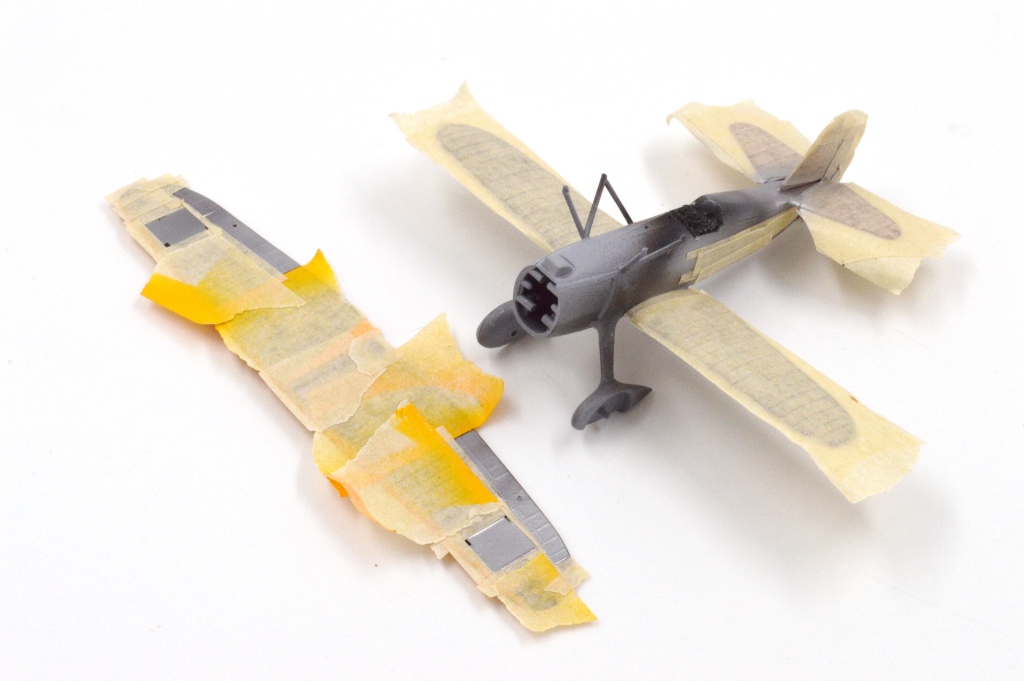











More finished photographs here: https://inchhighguy.wordpress.com/2020/09/03/monogram-curtiss-f11c-2-goshawk-in-1-72-scale/
Scale Modeling and Military History












More finished photographs here: https://inchhighguy.wordpress.com/2020/09/03/monogram-curtiss-f11c-2-goshawk-in-1-72-scale/
Werner “Vati” Mölders fought in the Condor Legion during the Spanish Civil War and was the leading German ace there with 14 victories. He flew with JG 53 during the French Campaign, where he was shot down and captured, later to be released after France surrendered. He was credited with 25 victories during the Battle of France and another 30 during the Battle of Britain. Mölders was the first pilot to be credited with passing the 100 victory mark, which he did on 15JUL41. This resulted in a promotion to Oberst (Colonel) at 28 and a ban from further combat flying. Mölders effectively ignored the ban, leading his squadron on “instructional flights” against Soviet aircraft. Mölders was killed while flying back to Germany aboard a transport for the funeral of Ernst Udet, the aircraft crashing during a thunderstorm. He was credited with 115 official victories, and as many as 30 more were unofficially scored after his ban on combat flying.


















Part I here: https://inchhighguy.wordpress.com/2020/07/22/colorful-curtiss-p-40-warhawk-markings-part-1/
This is the Trumpeter StuG III Ausf. G, representing a late-production machine with cast steel return rollers and Saukopf gun mantlet with co-axial machine gun. The Schürzen brackets and “fencing” around the engine deck were added with Evergreen strip and Tequila bottle foil. This is a nice kit which goes together quickly.







Build thread here: https://inchhighguy.wordpress.com/2020/06/19/plastic-soldier-stug-iii-ausf-g-assault-gun-build-in-1-72-scale-part-i/

One Hundred Days: The Memoirs of the Falklands Battle Group Commander
By Admiral Sandy Woodward with Patrick Robinson
Hardcover in dustjacket, 360 pages, photographs
Published by Naval Institute Press April 1992
Language: English
ISBN-10: 1557506515
ISBN-13: 978-1557506511
Dimensions: 6.5 x 1.8 x 9.5 inches
Admiral Sir John “Sandy” Woodward was the Royal Navy’s Battle Group Commander during the Falklands war, this is his autobiographical account of the Navy’s preparation and conduct of that war. The first chapter is a detailed account of the loss of HMS Sheffield, ironically a ship which Woodward had commanded earlier in his carrier. Even though I was familiar with the circumstances of the Sheffield’s sinking there are many details and nuances in this account which were new to me. With the hooks firmly set, the authors then describe Woodward’s earlier career (mainly as a submariner) leading up to his being on exercise in the Mediterranean at the time of the Argentinian’s seizure of the Falklands.
Woodward’s account describes the various options and difficulties inherent in every decision an Admiral and his staff are required to make. There are advantages and liabilities in each option, and matters are often decided with incomplete information while under a strict timetable. These are all well laid out for the reader which gives ample insight into just how hard a job it is, a cautionary exercise for the armchair Admiral who might be inclined to second guess history with the benefit of hindsight.
While the Royal Navy’s Officers and men are superbly trained and did an outstanding job, I was surprised at the number and frequency of technical and mechanical issues suffered by their ships. Much of the later half of the campaign was fought with ships which were only partially operational due to mechanical failures or battle damage. I was also quite shocked to see how much valuable strategic and tactical information was supplied to the Argentinians by the BBC. This included the arrival in theater of the Amphibious Task Group, the timing of the Paratroop Regiment’s assault, and the fact that many of the bombs dropped by Argentinian aircraft were failing to explode after hitting British ships due to improper fusing.
I found this book hard to put down. It offers a unique insight into the mind of a battle group commander conducting a sustained campaign at sea. There are useful lessons for leaders both inside the military and in civilian life for planning and setting objectives. This is also one of the best historical accounts of the air and naval portions of the War in Falklands, as you would expect from the Admiral in overall command of the effort. Highly recommended.

Photographs taken in Las Vegas, Nevada in July 2006, contributed by David Knights.










Part III here: https://inchhighguy.wordpress.com/2022/06/26/mig-29-fulcrum-walk-around-part-iii/










To see more Women Warriors, click on the tags below:












This is a Curtiss P-40N-5-CU “Parrot Hawk’ serial number 42-105711 of the 502nd Fighter Squadron. The 502nd was a training unit based at Napier, Alabama in late 1943. I could not resist the spectacular parrot head markings, which came from Print Scale sheet 72-023.










Construction posts here: https://inchhighguy.wordpress.com/2020/05/22/special-hobby-curtiss-p-40-warhawk-batch-build-part-i/










Part II here: https://inchhighguy.wordpress.com/2020/07/29/colorful-curtiss-p-40-warhawk-markings-part-2/
Scale models, where they come from, and people who make them
Scale diorama tips and ideas
Let's build, and build again even if you won't build everything you have bought
A futile fight against entropy or 'Every man should have a hobby'? Either way it is a blog on tabletop wargames, board games and megagames
World War II with Scale Models
Illustrating Stories, Painting Miniatures, Reviewing Realms.
This is my ad free non-profit blog of my research notes on military history since April 2018.
Moving with the tides of history
Building and improving scale models
WHENEVER ANY FORM OF GOVERNMENT BECOMES DESTRUCTIVE OF THESE ENDS (LIFE,LIBERTY,AND THE PURSUIT OF HAPPINESS) IT IS THE RIGHT OF THE PEOPLE TO ALTER OR ABOLISH IT, AND TO INSTITUTE A NEW GOVERNMENT― Thomas Jefferson
Let's build and build again
This WordPress.com site is Pacific War era information
Scale Modeling and Military History
The best in WWII aviation history
Scale Modeling and Military History
Scale models from the sunny side of the Alps.
Scale Modeling and Military History
Scale Modeling and Military History
Scale Modeling and Military History
Scale Modeling and Military History
Scale Modeling and Military History
Scale Modeling and Military History
Scale Modeling and Military History
A blog about Modeling and life in general